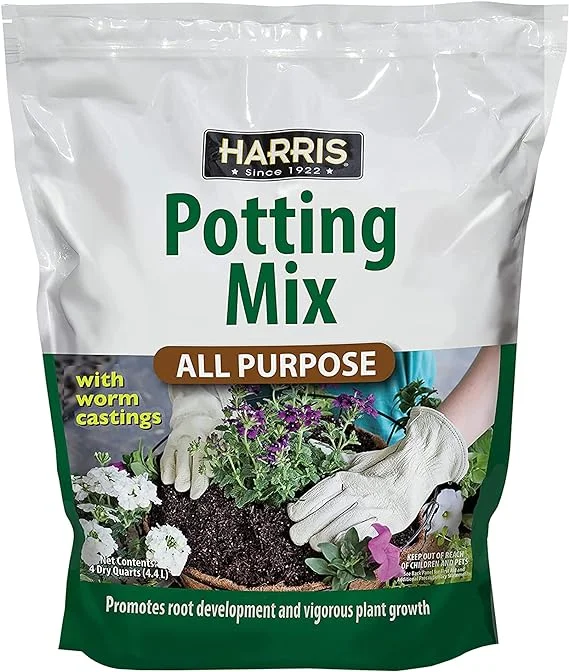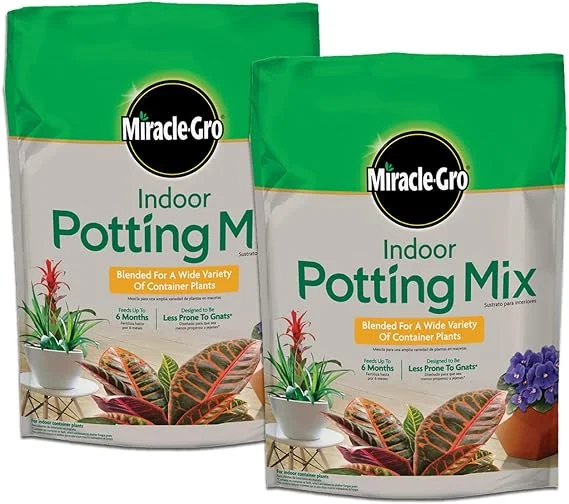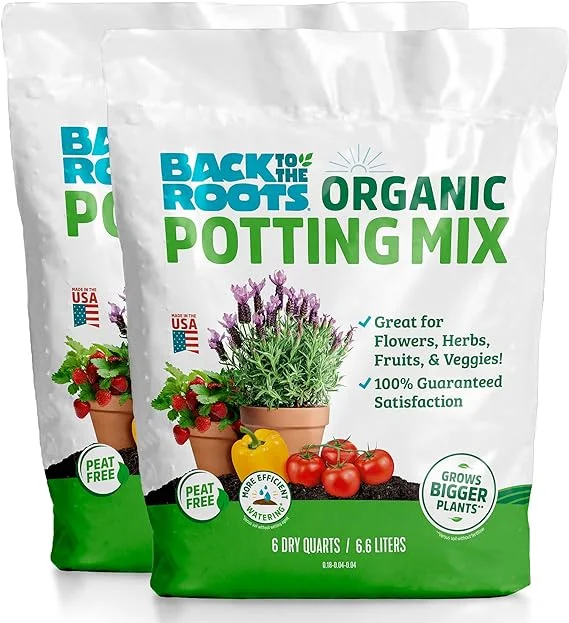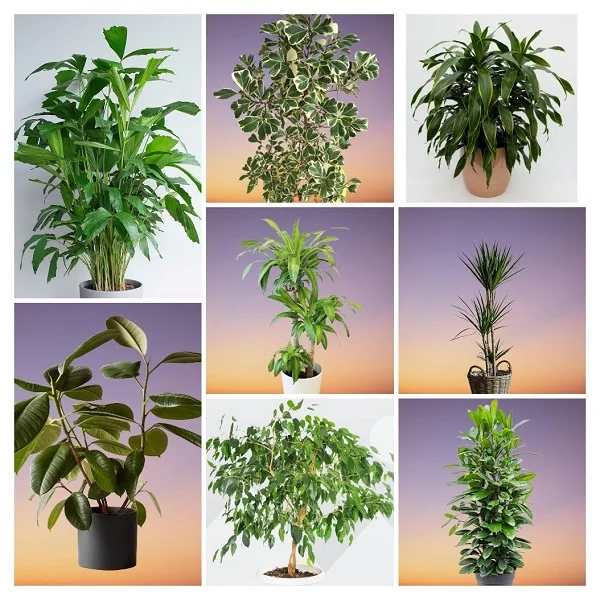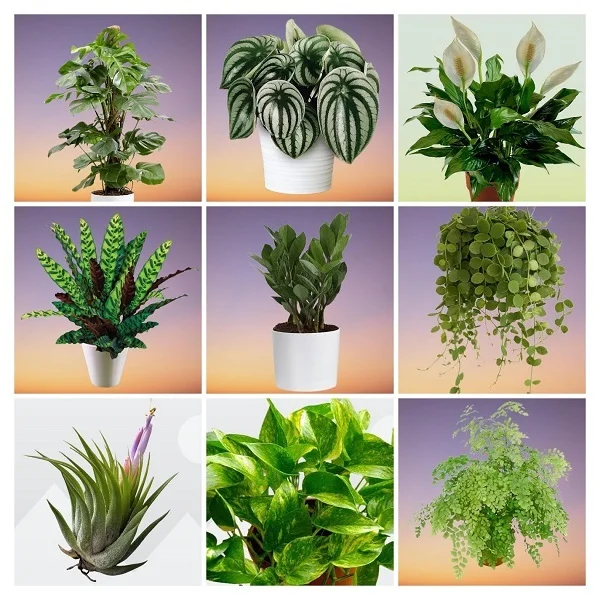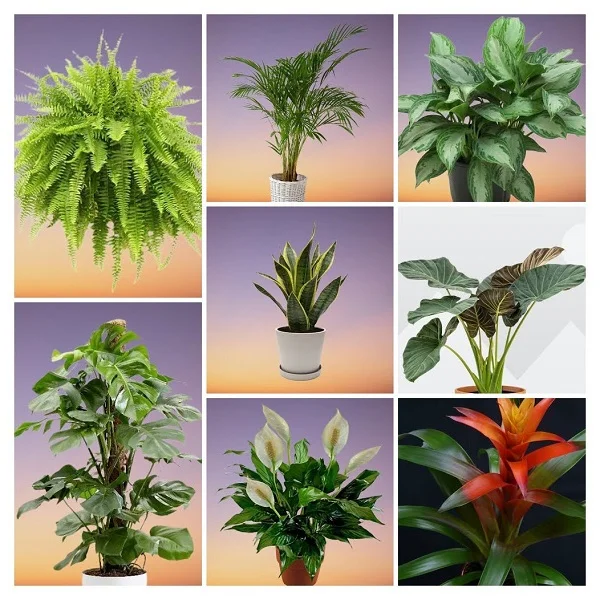Schefflera arboricola (Dwarf Umbrella Tree) Care Indoors; Lighting, Soil, Watering, Problems & Solutions
Some links in this post may be affiliate links
Dwarf Umbrella Tree (Schefflera arboricola) prefers medium to bright indirect light, moderate warmth, average humidity and moderately moist, rich, well-drained soil coupled with monthly feeding in the growing season.
Schefflera arboricola also called Hawaiian Schefflera or Dwarf Schefflera is among the popular fast-growing plants which will tolerate some level of neglect and easily adapt to a wide range of growing conditions.
Hawaiian Schefflera bears about ten leaflets radiating from each leaf-stalk. Under the right conditions, it will produce aerial roots which will convert to fully functional roots when they reach the ground.
Three conditions must be maintained for Dwarf Schefflera Tree to produce aerial roots. These conditions are a high growth rate, insufficient trunk roots (due to the plant being root bound or these roots are pruned) and a constantly high humidity.
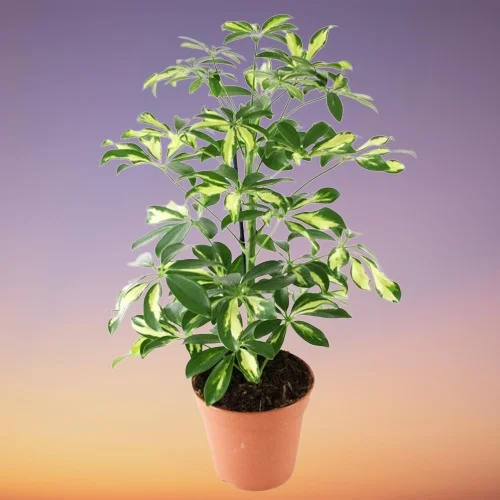
Botanical name: Schefflera arboricola
Synonym: Heptapleurum arboricola
Family: Araliaceae
Common names: Dwarf Umbrella Tree, Hawaiian Schefflera, Dwarf Schefflera
Origin
Schefflera arboricola also called Heptapleurum arboricola is native to tropical regions of Taiwan as well as Hainan. It is one of the popular tropical foliage plants that will grow successfully in the home, office and other suitable spaces.
Dwarf Umbrella Tree gets its common name from its appearance as a smaller version of Schefflera actinophylla (Umbrella Tree). It is much easier to grow than Umbrella Tree and will happily grow as a bush if the growing tip is removed.
Size
Dwarf Umbrella Tree will grow to a height of 4-6 feet when grown indoors which places among the low-light trees for indoor growing.
Varieties
Many varieties of Schefflera arboricola can been selected for their variations in leaf color and pattern which are often variegated with creamy-white to yellow edges or centers.
Varieties of Dwarf Umbrella Tree include Hayata whose leaves are greyish, Geisha Girl with rounded leaf tips and Variegata with yellow-splashed leaves among many others.
Is Schefflera arboricola toxic to pets?
Yes. Schefflera arboricola is toxic to both humans and pets as listed by ASPCA. It contains "sharp" calcium oxalate crystals that are insoluble and damage cells and tissues of animals if ingested. The crystals cause swelling of the exposed tissue and the digestive tract which may be fatal to both animals and humans.
Where to Buy
Dwarf Schefflera Plants are a beautiful addition for your plant collection. You may acquire them online from Etsy (Link to Etsy) or from Amazon (Link to Amazon).
How do you care for Schefflera arboricola indoors?
Care for Schefflera arboricola indoors entails giving it medium to bright indirect light, moderate warmth of 16-280C, average humidity of 50-55% and moderately moist, rich, well-drained soil coupled with monthly feeding during the growing season.
Dwarf Umbrella Tree care requires repotting every 2-3 years only when it becomes pot-bound. Regular pruning is necessary to keep the plant neat, to minimize pest and disease infestation and to encourage a bushy, compact growth. Keep reading for more on these growing conditions and how to achieve them.
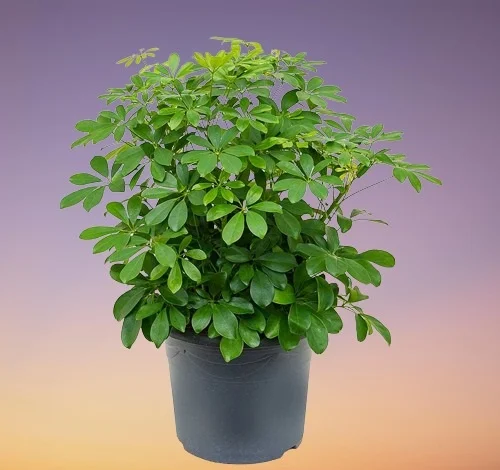
Light Requirements
Where do you put a Dwarf Umbrella Tree?
Dwarf Umbrella Tree grows best in medium to bright indirect light. Put it near a large, brightly-lit window but keep it away from direct sunshine to prevent scorching of the leaves.
The variegated types will require more light than the all-green type. They can be grown under a grow light where the natural light is inadequate.
Rotate the pot regulary to ensure that the plant receives light on all sides for uniform growth to prevent lop-sided growth.
Potting Soil
What is the best soil for Dwarf Umbrella Tree?
The best soil for Dwarf Umbrella Tree is a rich, well-draining soil to prevent it from getting soggy while providing the required nutrients. A blend of potting soil, perlite, and sand to enhance drainage is ideal for the plant.
Watering
How do you water Schefflera arboricola?
Water Schefflera arboricola liberally in spring and summer and allow the top 2-3 inches of soil to dry out between waterings. Maintain the soil moderately moist and avoid overwatering to prevent yellowing and leaf drop.
Decrease watering in fall and winter to keep the soil slightly moist as growth is minimal at this time. Do not allow the soil to dry out completely to avoid drooping and leaf drop.
Use a pot that has a drainage hole and well-draining soil to avoid getting soggy soil as it can result in root-rot and death of the plant.
Temperature and Humidity
Schefflera arboricola thrives in an average warmth of 16-280C. Keep it away from drafts to avoid flactuations in temperature as they can cause stunted growth and leaf drop.
Normal household humidity of 50-55% is perfect for Hawaiian Schefflera. However, too low humidity can result in brown leaf tips. Therefore, to increase humidity, set the pot on a wet pebble tray or use a cool mist humidifier. Do not mist and maintain good air circulation to prevent fungal diseases.
Fertilizer
What kind of fertilizer for Schefflera arboricola?
Feed Schefflera arboricola with a balanced, liquid fertilizer every 4 weeks in spring and summer for a lush growth.
Stop feeding in fall and winter as growth is minimal and feeding at this time may lead to fertilizer burn; brown leaf edges.
Regularly flush out accumulated salts from the soil by running a stream of water through the soil until the water comes out through the drainage hole. Allow it to run for a few minutes and repeat several times.
Repotting
Repot Schefflera arboricola every 2-3 years during the growing season when the plant becomes root-bound. Use a pot 1 size larger than the current one as it prefers to be pot-bound.
Ensure that the pot has a drainage hole as the plant does not like to be in soggy soil and it can lead to root-rot. Take a look at these ceramic pots with drainage holes on Amazon.
Pruning & Maintenance
Can you prune a Dwarf Umbrella Tree?
Yes. Pruning Dwarf Umbrella Tree involves:
- Removal of dead and yellow leaves to maintain the plant neat as well as reduce pests and diseases infestation.
- Regular pinching off the growing tips to encourage a bushy and compact growth, new growth will appear just below the cut.
- Cutting back leggy branches and stems a few inches above the soil level to encourage new growth. Use a sharp, clean pair of pruning scissors to minimize cross-contamination.
To prevent branching, do not pinch the growing tips and provide support for the plant to encourage upright growth.
The foliage emanating from the pruning can be used for taking cuttings to propagate new plants.
Regularly clean the leaves by damp-wiping with a soft cloth to get rid of dust and discourage pest infestation.
Dwarf Umbrella Tree Propagation
Dwarf Umbrella Tree (Schefflera arboricola) is propagated from stem cuttings or by air layering at the beginning of the growing season (spring to early summer) when it is actively growing.
Learn how to propagate Dwarf Umbrella Tree (Schefflera arboricola).
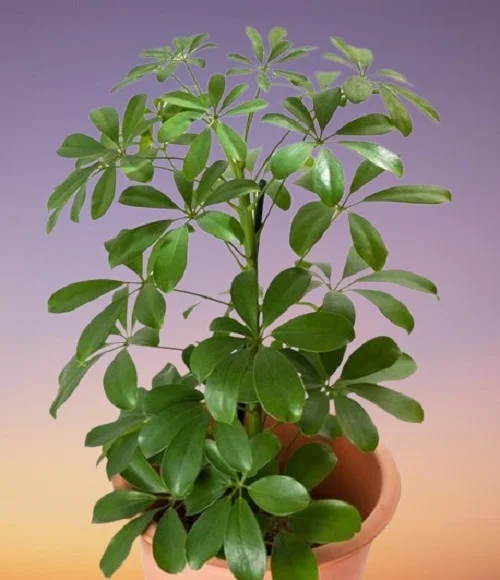
Schefflera arboricola Problems & Remedies
Dwarf Umbrella Tree (Schefflera arboricola) problems are yellow leaves, wilting and drooping leaves, brown and falling leaves, plant dying, leaf drop, leggy growth, pests and diseases among others. Keep reading for more on these problems and how to fix them.
Yellow leaves
Why is my Dwarf Umbrella Tree turning yellow?
Some of the causes of yellow leaves on your Dwarf Umbrella Tree are overwatering, soggy soil, temperature stress, and nutrient deficiency.
How to fix it
Overwatering: Do not water on a schedule. Water only when the top 2-3 inches of soil dry.
Soggy soil: Use a well-draining potting soil and a pot that has a drainage hole.
Temperature stress: Keep the plant away from drafts coming from hot surfaces, hot air vents, AC units, windy doors among others.
Nutrient deficiency: Apply a balanced, water-soluble fertilizer every 4 weeks in spring and summer.
Wilting and drooping leaves
Why is my Dwarf Umbrella Tree wilting?
Wilting and drooping leaves on your Dwarf Umbrella Tree is caused by underwatering, dry air, being pot-bound, and extreme temperatures.
How to fix it
Underwatering: Water when the top 2-3 inches of the soil feel dry and do not let the soilball dry out completely.
Dry air: To upscale humidity, set the pot on a wet pebble tray, use a humidifier or grow the plant in a well-lit bathroom.
Being pot-bound: Repot the plant into a pot one size larger than the current one.
Extreme temperatures: Keep the plant away from drafts coming from heat sources, AC units, drafty windows, windy doors and others.
Brown and falling leaves
Why are the leaves on my Dwarf Umbrella Tree turning brown and falling off?
The main causes of brown leaves on your Dwarf Umbrella Tree are inconsistent watering, soggy soil, temperature stress, direct sunlight, and aging.
How to fix it
Inconsistent water: Water when the top 2-3 inches of soil dry. Never allow the soil to dry out completely.
Soggy soil: Use a pot that has a drainage hole and a well-draining potting soil.
Temperatute stress: Protect the plant from drafts emanating from AC units, heat sources, windy doors and others.
Direct sunlight: Keep the plant away from direct sunlight or use a light curtain to filter the sunshine.
Aging: This is a natural process; as the plant matures the lower leaves turn brown and fall off.
Plant dying
Why is my Dwarf Umbrella Tree dying?
Your Dwarf Umbrella Tree is dying due to root-rot or spider mites infestation.
How do you bring a Dwarf Umbrella Tree back to life?
Root-rot: The diseases is prevalent in soggy soil. It is characterized by yellowing and wilting of the leaves which is rapidly followed by browning and plant collapse.
- Carefully slip the plant out of its pot and inspect the roots.
- Trim the brown-black, mushy roots and treat the healthy roots with a copper-based fungicidal solution as indicated on the label.
- Disinfect the pot with the fungicidal solution or use a fresh pot to repot the plant in fresh, well-draining soil.
- Do not water the plant immediately and keep it dry for 5-7 days before you can resume watering.
- Use a pot with a drainage hole and well-draining soil to prevent the soil from getting soggy.
- Cut down on watering in fall and winter as growth is slowed at this time; keep the soil slightly moist.
Spider mites infestations: Regularly check underneath the leaves for these pests and carry out timely control measures. Increase humidity to discourage the pests.
Leaf drop
Why is my Dwarf Umbrella Tree dropping leaves?
Dropping leaves on Dwarf Umbrella Tree is caused by dry air, incorrect watering, soggy soil, low light, and cold drafts.
How to fix it
Dry air: Set the pot on a wet pebble tray or use cool mist humidifier to elevate humidity.
Incorrect watering: Water the plant when the top 2-3 inches of soil feel dry but do not allow the soil ball to dry out completely.
Soggy soil: Use a pot with a drainage hole and free-draining soil.
Low light: Move the plant to a brighter spot or instal a grow light if the natural lighting is not adequate.
Cold drafts: Keep the plant away from drafty windows and doorways, air conditioning units, and others to maintain a warmth of 16-280C.
Leggy growth
Leggy growth on Dwarf Umbrella Tree is caused by too little light and improper feeding.
Too little light: Move the plant to a brighter spot or instal grow lights if the natural light is inadequate.
Improper feeding: Feed with a balanced fertilizer every 4 weeks in spring and summer. Do not feed in fall and winter as growth is reduced at this time.
Pests
Common pests in Dwarf Umbrella Tree are spider mites, mealybugs and scales.
How to fix it
- Isolate the affected plant to prevent spread to the other plants.
- Treat the infested plant with neem oil or insecticidal soap as per the manufacturers instructions.
- Regularly check underneath the leaves for these pests and carry out timely control measures.
- Keep the plant properly pruned and elevate humidity to discourage pest infestation.
Diseases
Dwarf Umbrella Tree is prone to leaf spot disease which is enhanced by overwet conditions. The disease presents as brown patches surrounded by a yellow halo.
How to fix it
- Remove and burn the affected parts to reduce the risk of spread to the rest of the plants.
- Spray the affected plant with a systemic fungicide and ensure to cover all the parts with the fungicidal solution.
- Keep the plant on the dry side, do not mist it and ensure good air flow.
- Use a pot with a drainage hole and well-draining soil.
Conclusion
Schefflera arboricola (Dwarf Umbrella Tree) is a versatile, low-maintenance houseplant that enhances indoor spaces with its elegant foliage. By providing proper light, water, humidity, and care, you can enjoy a lush, healthy plant year-round. Whether propagating new plants or tackling common issues, this guide ensures your plant remains thriving and beautiful.
You liked it? Share on social media.
Related Content
Amazon Associates Disclosure
Homeplantsguide.com is a participant in the Amazon Services LLC Associates Program, an affiliate advertising program designed to provide a means for sites to earn advertising fees by advertising and linking to amazon.com.
